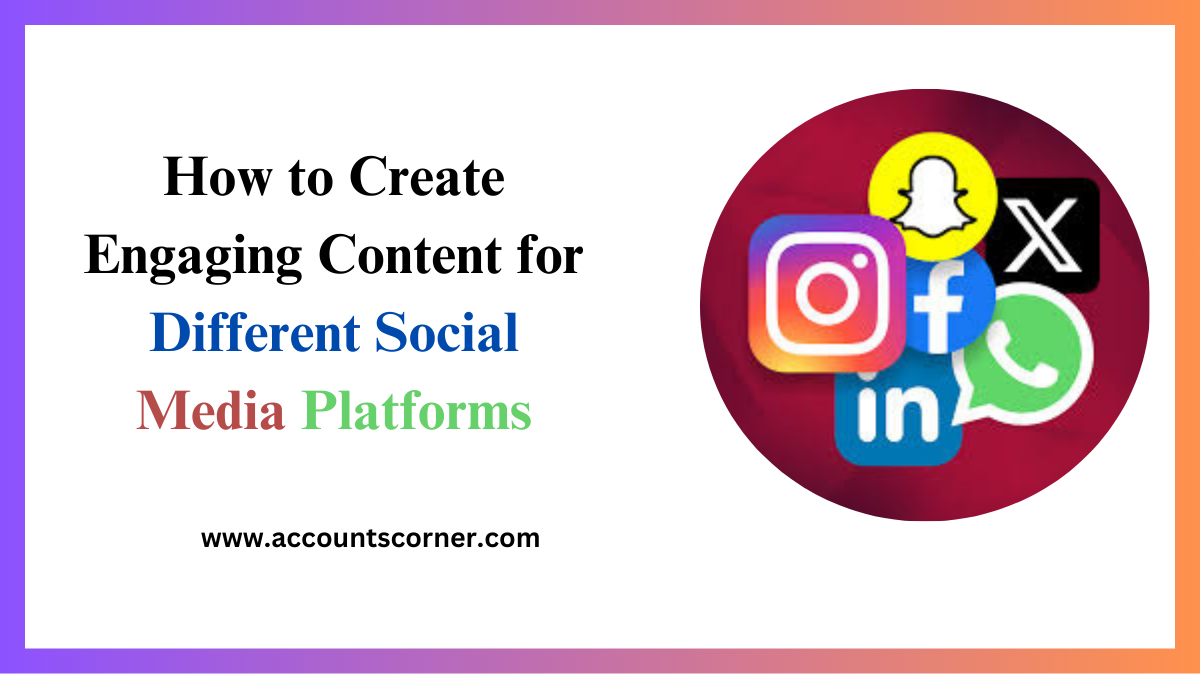Products
-
 Flicker New Accounts
Rated 5.00 out of 5$0.50
Flicker New Accounts
Rated 5.00 out of 5$0.50 -
 Discord New accounts With Gmail
Rated 5.00 out of 5$1.00
Discord New accounts With Gmail
Rated 5.00 out of 5$1.00 -
 Reddit New Accounts With Gmail
Rated 5.00 out of 5$1.00
Reddit New Accounts With Gmail
Rated 5.00 out of 5$1.00 -
 Quora New accounts With Gmail
Rated 5.00 out of 5$1.00
Quora New accounts With Gmail
Rated 5.00 out of 5$1.00 -
 Buy AOL AGED Accounts
Rated 5.00 out of 5$1.00
Buy AOL AGED Accounts
Rated 5.00 out of 5$1.00 -
 Buy Outlook New Accounts
Rated 5.00 out of 5$1.00
Buy Outlook New Accounts
Rated 5.00 out of 5$1.00 -
 Buy Hotmail Aged Accounts
Rated 5.00 out of 5$1.00
Buy Hotmail Aged Accounts
Rated 5.00 out of 5$1.00 -
 Youtube Accounts With Channel and Video
Rated 5.00 out of 5$2.00
Youtube Accounts With Channel and Video
Rated 5.00 out of 5$2.00 -
 Youtube Accounts With Channel
Rated 5.00 out of 5$1.00
Youtube Accounts With Channel
Rated 5.00 out of 5$1.00 -
 Buy Twitter Aged Accounts 2010 to 2021
Rated 5.00 out of 5$1.50
Buy Twitter Aged Accounts 2010 to 2021
Rated 5.00 out of 5$1.50
How to Create Engaging Content for Different Social Media Platforms
Posted by:
preethi

In today’s digital age, social media platforms is a powerhouse for connecting with audiences, building brands, and driving engagement. Creating content that resonates across different platforms can be challenging but highly rewarding. This blog post will guide you through the key strategies for crafting engaging social media content tailored for various platforms, ensuring your messages hit the mark every time.
Table of Contents
ToggleIntroduction to Content Creation
Creating content for social media platforms isn’t just about writing a clever post or sharing an eye-catching image. It’s about understanding your audience, the platform, and how to convey your message in a way that sparks interest and engagement. Whether you’re a small business owner looking to buy social media accounts or a seasoned marketer seeking new strategies, this guide will provide valuable insights.
Social media platforms each have their own unique characteristics and user expectations. What does well on Instagram might not function as well on LinkedIn. Therefore, tailoring your content to fit each platform is crucial for maximizing your reach and impact.
Understanding Your Audience
Before you start creating content, it’s essential to know who you’re talking to. Your audience’s preferences, behaviors, and demographics will influence the type of content that will engage them. Use analytics tools to gather data about your followers and tailor your content accordingly.
For instance, if you’re targeting a younger audience on Instagram, vibrant visuals and trendy topics will likely perform well. On the other hand, LinkedIn’s professional environment calls for more insightful and industry-specific content.

Tailoring Content for Each Social Media Platforms
Facebook is a versatile platform that supports various content formats, including text, images, videos, and live streams. To engage users on Facebook, mix up your content types and keep posts interactive. Utilize features like polls, Q&A sessions, and stories to foster engagement.
Remember, Facebook’s algorithm favors content that sparks conversations. Pose queries or start conversations to get feedback and shares. To keep your audience interested, stick to a regular posting schedule because consistency is essential.
Instagram is all about visuals. High-quality images, captivating videos, and aesthetic stories can significantly boost your engagement. Utilize Instagram’s features like IGTV for long-form videos and Reels for short, entertaining clips.
Hashtags are powerful tools on Instagram. Look up and utilize pertinent hashtags to make your posts more visible. Additionally, engaging with your community through comments and DMs can help build a loyal following.
Twitter is a fast-paced platform where brevity is valued. Craft concise and compelling tweets that get straight to the point. Use trending hashtags and participate in popular conversations to increase your reach.
Visuals also play a crucial role on Twitter. Attach images, GIFs, or videos to your tweets to make them more engaging. Additionally, tweeting multiple times a day can help maintain your presence in the fast-moving Twitter feed.
LinkedIn is the go-to platform for professionals and B2B marketing. Share insightful articles, industry updates, and thought leadership content to position yourself as an expert in your field. Personal stories and behind-the-scenes looks into your business can also resonate well.
Encourage engagement by asking for opinions or starting discussions in LinkedIn groups. Regularly updating your profile and company page with relevant content will help you stay top-of-mind with your connections.
Pinterest is a platform for visual discovery where people look for ideas. Create eye-catching pins with a clear value proposition. Tutorials, infographics, and visually appealing graphics perform exceptionally well.
Organize your pins into thematic boards to make it easy for users to find what they’re looking for. Optimize your pins with keywords in the descriptions to improve discoverability.
Visual vs Text-Based Content
- The Power of Visuals
Visual content is incredibly powerful on social media platforms. Videos and pictures are more powerful than words alone at expressing feelings and ideas. Use high-quality visuals that align with your brand’s aesthetic and message.
Infographics and charts are excellent for presenting data in a digestible format. Behind-the-scenes photos and user-generated content can also humanize your brand and build trust with your audience.
- Crafting Compelling Text
While visuals are crucial, well-crafted text is equally important. Compose attractive, succinct, and understandable subtitles to go along with your images. Use a conversational tone to make your posts relatable and approachable.
To increase the engagement of your material, including storytelling components. Share anecdotes, customer testimonials, or case studies to connect with your audience on a deeper level.
Posting Frequency and Timing
- Finding the Right Balance
Posting frequency can significantly impact your engagement rates. Too many posts can overwhelm your audience, while too few can make you forgettable. Find a balance that works for your audience by testing different frequencies and analyzing the results.
- Timing Matters
The visibility and engagement of your posts might be impacted by the time of them. Social Media Platforms, Post when your audience is most active to maximize reach. Use analytics tools to determine the best times to post for each platform.
For example, early mornings and late afternoons are generally good times to post on LinkedIn, while evenings and weekends might be better for platforms like Instagram and Facebook.
Analyzing and Adapting Your Strategy
- Track Your Performance
Regularly analyze the performance of your social media platforms content. Use platform-specific analytics tools to track metrics like engagement, reach, and conversions. Determine the content kinds that your audience responds to the most, then modify your approach accordingly.
- Adapt and Improve
Social Media Platforms trends and algorithms are constantly evolving. Stay updated with the latest changes and adapt your strategy to stay relevant. Continuously experiment with new content formats, posting times, and engagement tactics to find what works best for your audience.
Engaging with Your Audience
- Building Community
Engagement extends beyond merely posting content; it involves actively participating in conversations with your audience. Respond to comments and messages promptly to show that you value their input. Consider hosting live Q&A sessions where your followers can interact with you in real-time, deepening their connection to your brand.
- User-Generated Content
Invite people in your audience to talk about their interactions with your company. User-generated content not only provides you with authentic material to showcase but also fosters a sense of community among your followers. Create campaigns or contests that motivate users to share their content, using specific hashtags to centralize contributions.
Leveraging Influencer Partnerships
- Identifying the Right Influencers
Working with influencers can greatly increase the reputation and reach of your company. Identify influencers whose values align with your brand and who engage with a similar target audience. Their endorsement can introduce your product or service to a wider demographic and generate authentic discussions around your brand.
- Crafting Collaborative Content
When working with influencers, ensure the content produced is aligned with your brand messaging but still allows for their unique style. Their audience will respond more favorably to this sincerity. Encourage influencers to share personal stories related to your brand, creating a more genuine connection that can drive engagement.
Monitoring Competitor Strategies
- Benchmarking Your Efforts
Keep a close eye on your competitors’ Social Media Platforms activities. Monitoring their content strategies can provide valuable insights into what works in your industry. Identify their most engaging posts and analyse the patterns in their follower interactions to inform your approach.
- Differentiating Your Brand
While it’s beneficial to learn from competitors, aim to differentiate your content by highlighting what makes your brand unique. Focus on your brand’s core values and mission, and use storytelling to communicate these aspects effectively. Offering a distinctive perspective or niche can set you apart in a crowded market.
Conclusion
Creating engaging content for different social media platforms requires a deep understanding of your audience, the unique characteristics of each platform, and a willingness to adapt and experiment. By tailoring your content to fit each platform and leveraging both visual and text-based elements, you can maximize your reach and engagement.
Remember, consistency is key. Regularly analyze your performance, adapt your strategy, and continue to learn and grow. With these tips, you’ll be well on your way to mastering the art of social media platforms content creation.
If you’re ready to take your social media platforms game to the next level, consider using tools to streamline your efforts. Whether you’re looking to buy social media accounts, buy bulk socialmedia accounts, or buy pva socialmedia accounts, there are resources available to help you achieve your goals.
















